Activation of CB1 specifically located on GABAergic interneurons inhibits LTD in the lateral amygdala
- PMID: 18323569
- PMCID: PMC2275656
- DOI: 10.1101/lm.741908
Activation of CB1 specifically located on GABAergic interneurons inhibits LTD in the lateral amygdala
Abstract
Previously, we found that in the lateral amygdala (LA) of the mouse, WIN55,212-2 decreases both glutamatergic and GABAergic synaptic transmission via activation of the cannabinoid receptor type 1 (CB1), yet produces an overall reduction of neuronal excitability. This suggests that the effects on excitatory transmission override those on inhibitory transmission. Here we show that CB1 activation by WIN55,212-2 and Delta(9)-THC inhibits long-term depression (LTD) of basal synaptic transmission in the LA, induced by low-frequency stimulation (LFS; 900 pulses/1 Hz). The CB1 agonist WIN55,212-2 blocked LTD via G(i/o) proteins, activation of inwardly rectifying K+ channels (K(ir)s), inhibition of the adenylate cyclase-protein kinase A (PKA) pathway, and PKA-dependent inhibition of voltage-gated N-type Ca2+ channels (N-type VGCCs). Interestingly, WIN55,212-2 effects on LTD were abolished in CB1 knock-out mice (CB1-KO), and in conditional mutants lacking CB1 expression only in GABAergic interneurons, but were still present in mutants lacking CB1 in principal forebrain neurons. LTD induction per se was unaffected by the CB1 antagonist SR141716A and was normally expressed in CB1-KO as well as in both conditional CB1 mutants. Our data demonstrate that activation of CB1 specifically located on GABAergic interneurons inhibits LTD in the LA. These findings suggest that CB1 expressed on either glutamatergic or GABAergic neurons play a differential role in the control of synaptic transmission and plasticity.
Figures
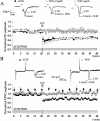
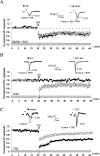
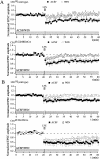
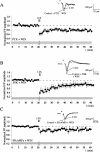

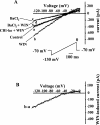

References
-
- Auclair N., Otani S., Soubrie P., Crepel F. Cannabinoids modulate synaptic strength and plasticity at glutamatergic synapses of rat prefrontal cortex pyramidal neurons. J. Neurophysiol. 2000;83:3287–3293. - PubMed
-
- Azad S.C., Rammes G. Cannabinoids in anaesthesia and pain therapy. Curr. Opin. Anaesthesiol. 2005;18:424–427. - PubMed
-
- Bordey A., Sontheimer H. Differential inhibition of glial K+ currents by 4-AP. J. Neurophysiol. 1999;82:3476–3487. - PubMed
Publication types
MeSH terms
Substances
LinkOut - more resources
Full Text Sources
Research Materials
Miscellaneous
